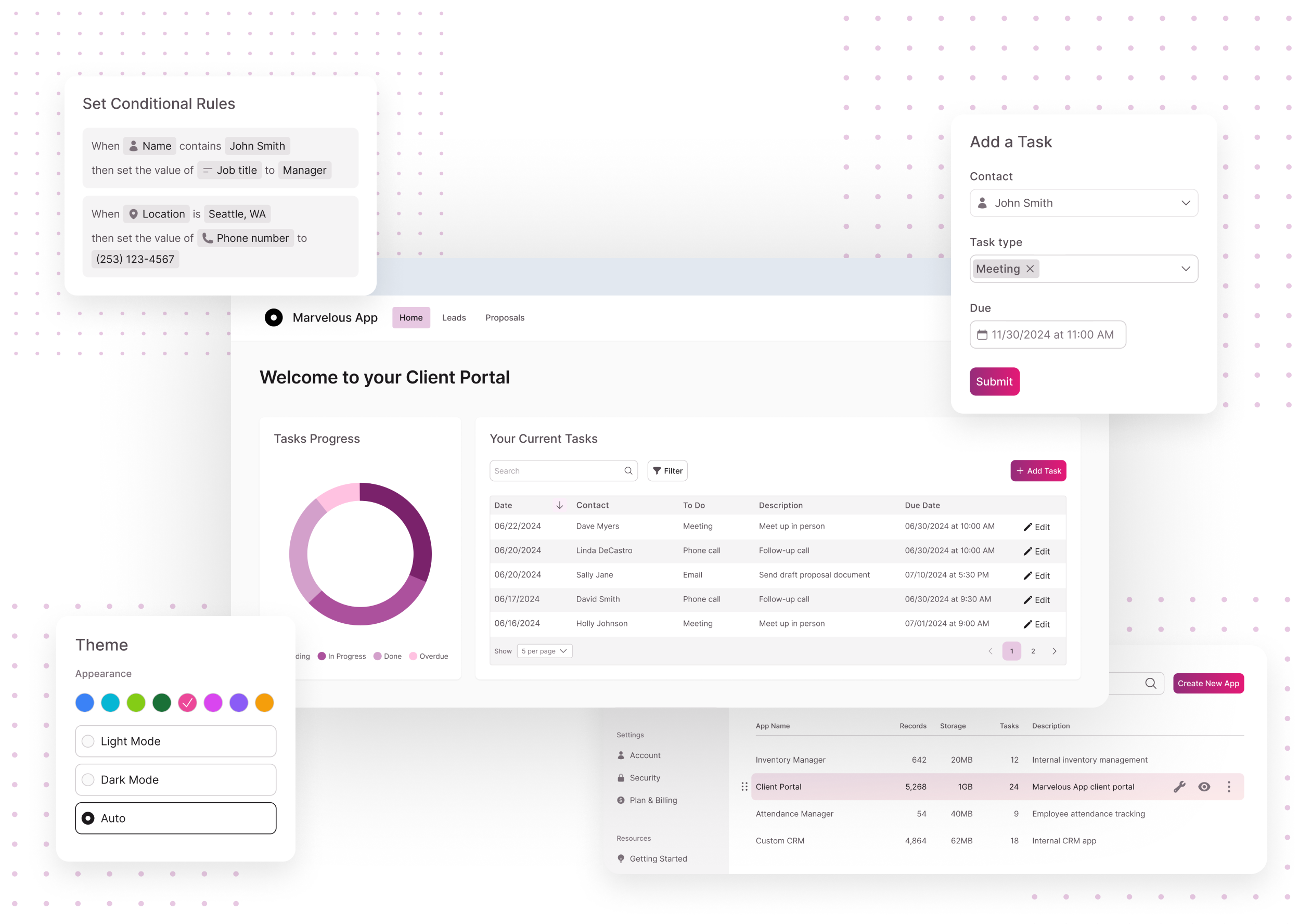Create Open Platform Databases Quickly with the most effective No-Code Tools Available
Wiki Article
Checking Out the Benefits of Scalable Data Sources That Call For No Coding Abilities for Effective Data Monitoring Solutions
The appearance of scalable data sources that remove the need for coding skills presents a transformative chance for companies seeking effective information monitoring remedies. As we think about the implications of such improvements, it becomes crucial to examine exactly how they can improve the landscape of information management and drive sustainable development in an affordable atmosphere.Boosted Access for Users
Enhanced ease of access for users is an important element of scalable data sources, making certain that information administration systems are intuitive and easy to use. In an age where data-driven choices are extremely important, access permits a broader series of individuals, including those without substantial technological competence, to involve with data source systems successfully. This democratization of data access helps with boosted collaboration throughout divisions, empowering workers to make and extract understandings educated decisions.Straightforward interfaces, such as drag-and-drop attributes and visual data depiction, streamline intricate information communications. These enhancements lower the understanding curve related to typical database management, allowing users to concentrate on leveraging data as opposed to coming to grips with technical intricacies. Scalable databases typically include real-time analytics and customizable control panels, providing users with instant understandings tailored to their certain demands.

Cost-Effectiveness and Resource Cost Savings
Effective information administration not just pivots on ease of access yet likewise on cost-effectiveness and resource cost savings. Scalable databases designed for customers with no coding abilities dramatically lower economic concerns typically connected with conventional data source management systems. By removing the demand for specialized shows know-how, companies can assign their sources extra successfully, concentrating funds on core business activities as opposed to comprehensive training or hiring skilled employees.Moreover, these data sources usually use cloud-based remedies, which further minimize prices associated with hardware and upkeep. Organizations can scale their database solutions according to their requirements, avoiding the expenditures sustained from over-provisioning sources. This adaptability means companies can adjust to changing demands without incurring unneeded expenses, causing considerable long-term financial savings.
In addition, straightforward user interfaces streamline data entry and administration procedures, decreasing the moment invested in management jobs. This performance converts right into labor cost savings, permitting teams to concentrate on calculated campaigns rather than routine maintenance. In general, adopting scalable databases that require no coding skills fosters an extra cost-effective method to information administration, allowing organizations to maximize their resources while keeping high degrees of operational performance.
Improved Cooperation Throughout Teams

In addition, scalable data sources help with seamless interaction try this out amongst group members. With user-friendly user interfaces that call for no coding abilities, employees can quickly produce, change, and share records or control panels tailored to their particular requirements. This democratization of information equips non-technical customers to add understandings, boosting the collaborative environment.
In addition, these data sources sustain simultaneous access, allowing multiple customers to deal with the same dataset at the same time. This function improves efficiency, as teams can take part in joint information evaluation without the danger of version control problems. The capability to leave notes or comments directly within the database further advertises discussion and makes clear information interpretations.
Streamlined Information Monitoring Processes
In today's data-driven environment, organizations recognize the necessity of streamlined information monitoring refines to make best use of performance and accuracy. By leveraging scalable data sources that require no coding skills, businesses can simplify their information handling and decrease the intricacies generally linked with typical database systems. his comment is here This ease of access equips non-technical customers to engage directly with data, promoting quicker decision-making and minimizing reliance on specialized IT personnel.Structured information management processes improve process by automating routine tasks such as data entry, recognition, and reporting. Automated information combination guarantees that details from different sources is accumulated effortlessly, getting rid of silos and promoting a merged view of essential service metrics (no-code). Straightforward user interfaces permit employees to control data easily, enabling them to create understandings that drive critical campaigns without the need for substantial training.
This efficiency not only accelerates functional processes but also reduces the possibility for human error, making certain that information remains reputable and exact. Inevitably, structured data monitoring processes via scalable databases lead to improved performance, allowing organizations to concentrate on core tasks while making certain that their information monitoring techniques are effective and efficient.
Scalability for Growing Businesses

For broadening ventures, the ability to scale up or down is important. A scalable data source can handle an influx of information created from brand-new customers, products, or solutions, making certain that business procedures stay continuous. These data sources provide the capacity to handle peak loads successfully, which is vital during durations of rapid development or seasonal spikes.
Furthermore, several scalable data source solutions are created with straightforward user interfaces that call for no coding abilities, encouraging non-technical staff to take care of data properly (no-code). This democratization of information administration permits companies to allot sources strategically and minimize reliance on specialized IT personnel
Inevitably, adopting a scalable data source not just improves functional efficiency yet also promotes a setting where companies can introduce and evolve without the restrictions of traditional data source systems. This flexibility positions organizations for lasting success in today's affordable landscape.
Conclusion
In conclusion, scalable databases that call for no coding abilities give click significant advantages for reliable data management. By enhancing information management processes and using scalability for growing businesses, such remedies make it possible for organizations to adapt to changing demands efficiently.Boosted accessibility for users is a vital element of scalable databases, making sure that information administration systems are straightforward and intuitive.User-friendly interfaces, such as visual data and drag-and-drop features representation, streamline intricate information communications. Overall, adopting scalable databases that need no coding skills fosters an extra affordable approach to information administration, allowing companies to optimize their sources while preserving high degrees of functional efficiency.
By leveraging scalable data sources that need no coding abilities, companies can simplify their information handling and reduce the intricacies generally linked with conventional data source systems - no-code.Streamlined information management procedures enhance process by automating regular tasks such as information entry, validation, and reporting
Report this wiki page